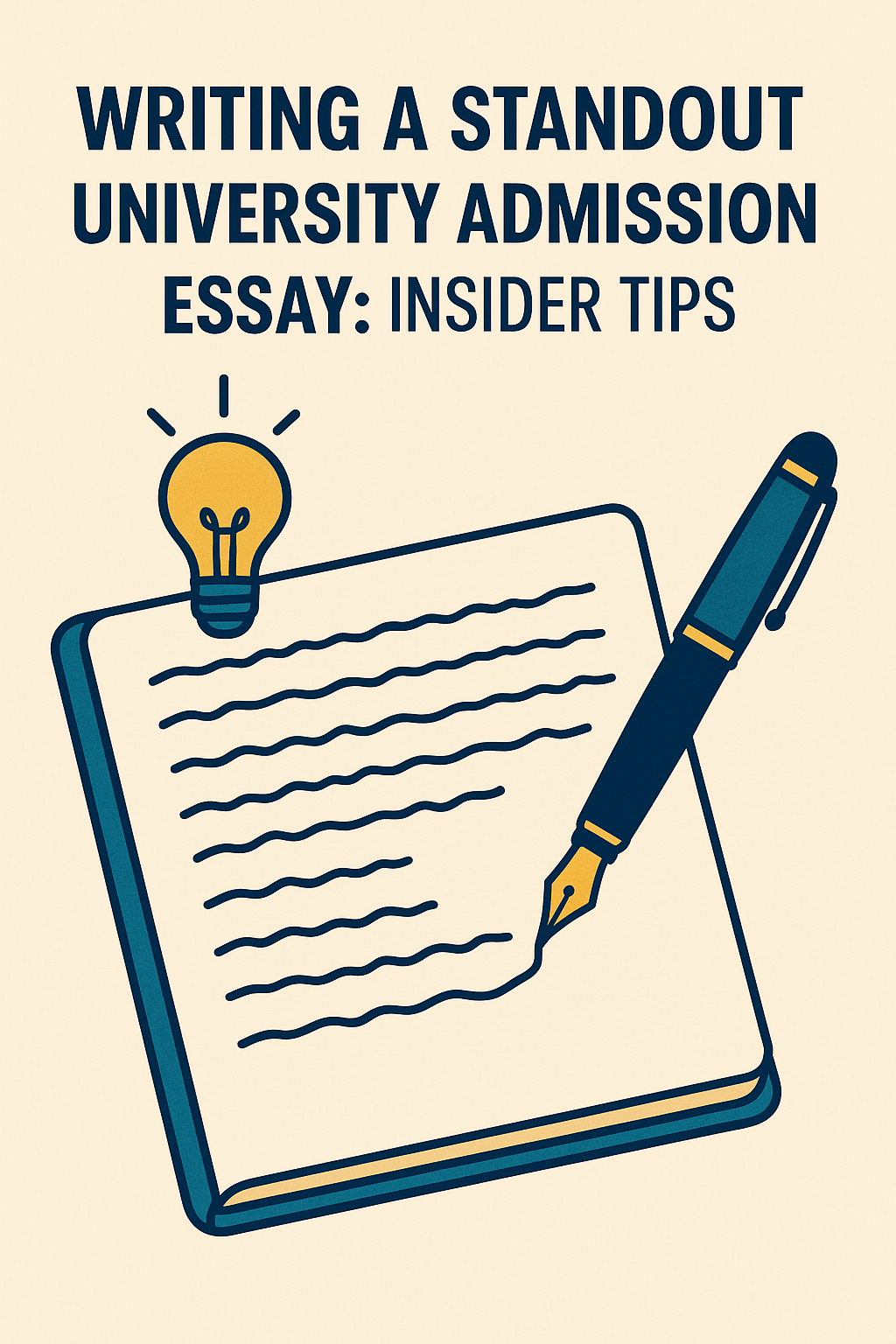1. Introduction
Your university admission essay is more than a requirement—it’s your personal narrative showcasing uniqueness, passion, and fit. Admissions officers sift through thousands of applications; a standout essay can elevate you above similarly qualified candidates.
In this guide, we’ll uncover strategies from brainstorming to final polish: generating compelling story ideas, structuring essays for impact, and refining language for clarity and tone. By adopting these insider tips, you’ll craft essays that resonate with admissions committees and open doors to your dream institutions.
2. Understanding the Prompt
2.1 Types of Prompts
- Personal Narrative: Share a significant experience or challenge.
- Why This University: Demonstrate knowledge of specific programs and culture.
- Diversity and Inclusion: Highlight unique perspectives and backgrounds.
2.2 Decoding Requirements
- Identify keywords: “reflect,” “analyze,” “describe.”
- Note word limits and formatting guidelines.
2.3 Aligning Your Goals
- Match essay theme with academic and career aspirations.
- Research university values to mirror language and priorities.
3. Brainstorming Unique Personal Stories
3.1 Reflective Techniques
- Mind Mapping: Central theme with branching experiences.
- Autobiographical Timeline: Chart key events and turning points.
3.2 Selecting the Right Story
- Choose events that showcase growth, resilience, or leadership.
- Avoid clichés: travel stories, sports victories—unless uniquely personal.
3.3 Emphasizing Impact
- Show personal transformation, lessons learned.
- Tie experiences to future goals.
4. Structuring Your Essay for Maximum Impact
4.1 The Hook
- Start with a vivid anecdote or provocative question.
- Engage readers emotionally or intellectually.
4.2 Body Paragraphs
- Focus each paragraph on a single theme or lesson.
- Use concrete details and active verbs.
- Transition smoothly between ideas.
4.3 The Conclusion
- Reinforce core message; look forward to university contributions.
- Avoid introducing new ideas.
5. Language, Tone & Style
5.1 Voice and Authenticity
- Write in your natural voice; maintain sincerity.
- Balance formality and personality.
5.2 Word Choice and Clarity
- Use specific, descriptive language; avoid vague adjectives.
- Eliminate unnecessary adverbs and jargon.
5.3 Editing for Precision
- Remove filler sentences; keep paragraphs concise.
- Read aloud to detect awkward phrasing.
6. Avoiding Common Pitfalls
- Clichés: Overused metaphors, common quotes.
- Over‑explanation: Assume reader knows basics; focus on insights.
- Lack of Focus: Stick to main theme; avoid tangents.
- Grammar and Mechanics: Proofread for typos, punctuation errors.
7. Peer Review and Professional Editing
7.1 Feedback Sources
- Teachers, mentors, peers.
- Professional services—use sparingly to retain voice.
7.2 Iterative Revision
- Incorporate feedback; aim for clarity and cohesion.
- Limit major rewrites late in the process; refine rather than overhaul.
8. Final Checklist
- Prompt compliance.
- Clear structure: hook, body, conclusion.
- Authentic voice and vivid details.
- Error‑free grammar and mechanics.
- Word count and formatting adherence.
